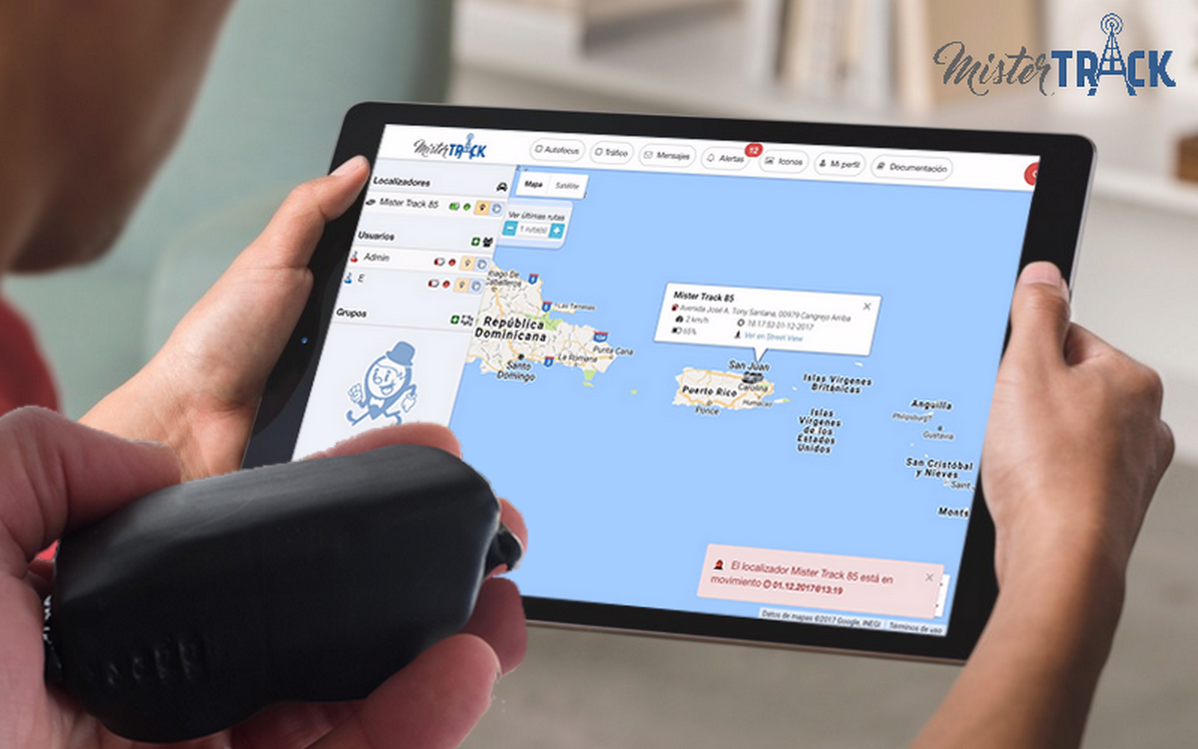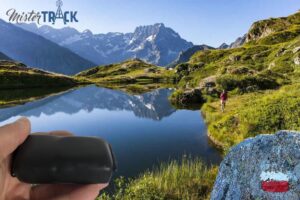What is a GPS locator? How does a GPS locator work? Mister Track explains it!
What is a GPS locator?
GPS locator, GPS tracker, GPS beacon, GPS lapa or GPS spy … there are several names to talk about these geolocation devices, with a simple search on the Internet you can find many different models. However, the vast majority (operating by SMS or Bluetooth) are ineffective, so it is difficult to find a very good quality locator among all these offers.
There are wired GPS locators (device directly connected to a vehicle, for example) or autonomous (non-wired device equipped with a battery). A GPS tracker receives location information from a satellite through a receiver. Then it transmits them through a GSM transmitter. The received satellite positions are communicated to a server which then restores them on a world map.
Mister Track develops autonomous GPS locators high-end professionals that they can be used to geolocate and track goods and people in real time. They are equipped with technology originally developed for the US military, which meets specific standards against shock and vibration , but also against humidity and heat .
Most of the Mister Track GPS beacon models have two powerful magnets : MT7000, MT10000 . They are hermetic and resistant with great autonomy . Mister Track locators have multi-operator sim cards and connect to GSM / GPRS / EDGE Quad-Band 850/900/1800/1900 MHz networks. For true real-time tracking, so Therefore, it is essential that the locator is equipped with a SIM card, without this it will not be able to transmit its positions. Forget about these uninteresting locators that work by SMS (reception on request of a link from the Google map to see the position) or by bluetooth (range limited to about twenty meters), and opt for a GPS beacon connected 24/7.
The GPS locator, how does it work?
Mister Track devices work with GPS (American), GLONASS (Russian) and QZSS (Japanese) satellite positioning systems, hence their great precision (less than 2 meters).
GPS positioning works thanks to trilateration (same as triangulation, but without angle calculation). Each satellite sends signals to Earth which include:
- the position in space of the satellite
- the time and date of broadcast of the signal
When your locator receives signals from a minimum of 4 satellites, you will be able to calculate your latitude, longitude and altitude, and thus locate your position.
To use GPS, you need a minimum of four satellites: three for position, and one more for timing. The greater the number of satellites captured, the better the accuracy.
The signal transmitted by satellites does not pass through buildings or metal.
Different factors can degrade the signal and the accuracy, such as buildings, a humid climate, the presence of mountains or a forest.
The location information received by the GPS receiver is then transmitted by the GSM transmitter to our monitoring platform in real time through our secure server .
How do I install a GPS locator?
The Mister Track locator does not need any installation, it is delivered ready to use . However, it is imperative that the locator is placed in a place where it will be able to connect to GSM and satellite networks without restrictions. Otherwise, its operation will not be optimal, the reading of the reports will be incomplete. Simple and intuitive , the GPS tracking platform geo.mistertrack.com allows you to configure in a few clicks the locators and track them with your computer, smartphone or tablet. Choose to set the tracker in tracking mode, sleep mode, or stealth mode. Take advantage of ‘low speed stance’ and set motion, vibration, zone entry and exit alerts.
Battery consumption depends on different factors. The main ones are:
- The frequency of updating the positions in tracking mode: if the update is programmed in small intervals, for example of 10 seconds, the device will consume more battery than in intervals of one hour.
- The duration of operation: when the beacon detects a movement or a vibration it will start to search the GSM and Satellite networks. The beacon will continue to transmit data until it detects movement or vibration. After two minutes of total stop, the locator will go into “stand-by” and, in this way, will save battery.
The battery consumption is higher the more GPS data is transmitted to the server, as well as at the time of connection (search for satellites and GSM networks). If the installation of the beacon is incorrect, the search for satellites necessary for the location will be done continuously and a more important battery consumption would occur.
Three proven consumer cases (MT7000):
- In tracking 10 seconds: more or less 2 hours of non-stop operation.
- In tracking 2 minutes: more or less 3 weeks of autonomy for 2 hours of operation per day.
- In sleep mode: 6 months of autonomy with 2 security points per day.
Rent your GPS locator?
With our innovative solution of online rental, of course take advantage of the many characteristics of our autonomous GPS limpets, the most complete and efficient on the market, developed by geolocation and research professionals.






